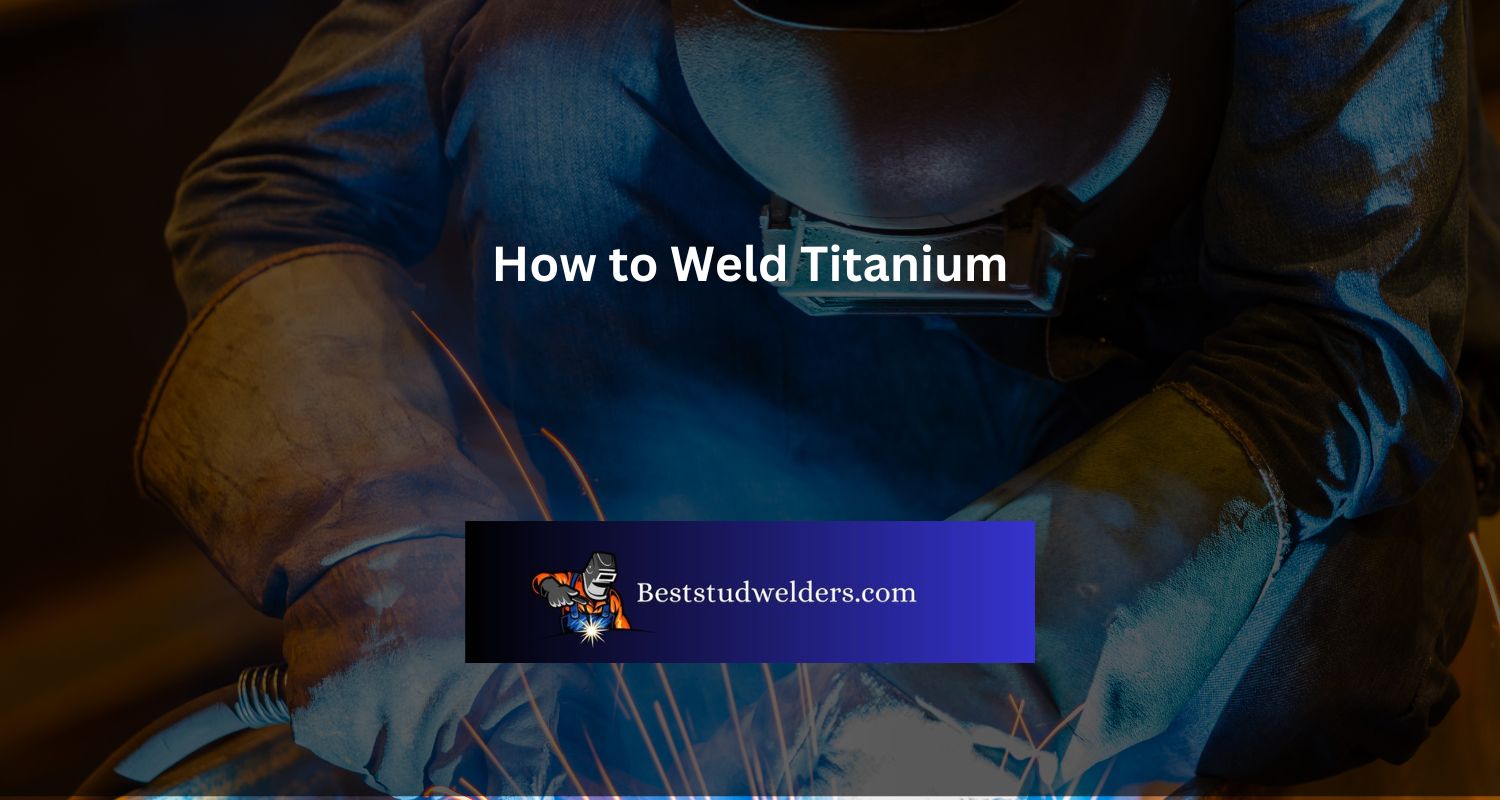Welding Titanium – A Beginner’s Guide!
Titanium welding is different than welding other metals. It has unique properties like high melting point, low thermal conductivity, and it reacts with atmospheric gases. Here’s a guide with tips for beginners to successfully weld titanium.
Get to Know the Material: Understand the material you’re working with before beginning the welding process. Titanium has certain mixtures and properties that set it apart from other metals. Know how it reacts to heat and contamination in different environments.
The Right Equipment: The right equipment is key to successful titanium welding. TIG (Tungsten Inert Gas) or gas-shielded flux-cored wire arc welding processes are often used. They provide precise heat control and can meet industrial standards.
Surface Prep: Do proper surface preparation before welding titanium. Remove dirt, oils, and grease with suitable cleaning solvents or pickling methods.
Understanding Titanium Welding
To understand titanium welding with ease, explore its key properties and various types of welding processes available. Discover how each type of welding process unlocks the desirable characteristics of titanium.
Properties of Titanium
Titanium is a desirable metal with special characteristics that make it indispensable across multiple industries. Its remarkable strength, low density, corrosion-resistance, and biocompatibility are some of its features. To understand this metal better, let’s look at its Properties.
| Property | Value |
|---|---|
| Atomic Number | 22 |
| Density | 4.506 g/cm³ |
| Melting Point | 1,668 °C |
| Boiling Point | 3,287 °C |
| Young’s Modulus | 116 GPa |
| Tensile Strength | 434 MPa |
In addition, titanium has great thermal stability and can withstand high temperatures. It is also naturally resistant to most environmental conditions, like seawater, sunlight, and pollution.
When welding titanium metals, extra precautions must be taken due to its special chemical properties. For instance, titanium reacts with Oxygen forming brittle oxides at high temperatures. Therefore, shielding gases like argon or helium should be used during the welding process.
Pro Tip: Titanium is highly reactive with many elements like Oxygen and nitrogen in the atmosphere. That’s why welding titanium needs professional expertise and caution.
Types of Titanium Welding Processes
When welding together titanium materials, there are different processes to choose from. Each has unique benefits that make them ideal for certain applications. To help you learn more about these welding methods, we have made a table. It includes columns like Process Name, Features, Advantages, and Disadvantages. By studying this table, you can get a better understanding of the differences between the processes.
It is important to remember that each method has unique details. For instance, some are better for joining certain grades of titanium with specific thicknesses. So, when selecting a process, think about these details.
If you are working on a titanium welding project, be sure to research all the processes before you start. Knowing the pros and cons of each option will help you get the best results.
.jpg)
Equipment and Tools Required for Welding Titanium
To get started welding titanium, you’ll need specific equipment and tools for each welding technique. You require Gas Tungsten Arc Welding (GTAW) equipment and tools for GTAW welding, and Plasma Arc Welding (PAW) equipment and tools for PAW welding. Read on to learn more about each sub-section’s necessary tools and equipment for welding titanium.
Gas Tungsten Arc Welding (GTAW) Equipment and Tools
Welding titanium using Gas Tungsten Arc (GTAW) requires certain tools and equipment. These include a power source, shielding gas, filler material, tungsten electrode, torch and protective gear. Check the table below for the specifications of each item:
| Equipment | Specifications |
|---|---|
| Power Source | DC output, 200 amps minimum |
| Shielding Gas | Argon or a helium-argon mixture |
| Filler Material | Titanium rods or wire |
| Tungsten Electrode | Pure tungsten or thoriated tungsten (2% thorium dioxide) |
| Torch | Air-cooled or water-cooled |
| Protective Gear | Helmet, gloves, leather apron/rubber coat |
Unique factors need to be considered when handling titanium. Avoid contamination of the surface by oils, grease or other substances as they can harm weld quality.
For successful welding of titanium through GTAW, use high-quality equipment and take safety precautions. Get the right skills and gear to excel at titanium welding!
Plasma Arc Welding (PAW) Equipment and Tools
For successful welding of Titanium, Plasma Arc Welding (PAW) Equipment and Tools are essential. Here is a list of must-have items:
- Power Source: An alternating current power source with a high-frequency generator for easy ignition.
- Torch: PAW torches have tungsten electrodes that will heat in the plasma stream to create an arc.
- Gas Supply System: A flow-meter and regulator for shielding gases such as argon or helium.
- Filler Metal Supply System: An automatic rod feeding system with a guide tube is needed for constant supply of filler metal.
- Cooling System: A cooling system with water-cooled cables or torches is essential as the intense heat can damage the equipment.
Titanium is highly reactive at high temperatures. Thus, it’s important to maintain an oxygen-free environment while welding. If not, oxidation on the metal surface can occur which will render the product useless. Therefore, it’s essential to use proper PAW equipment and tools for successful welding.
Pre-Welding Preparations for Titanium
To ensure high-quality welding in Titanium, you need to prepare properly before the welding process. Cleaning and Surface Preparation, as well as Selecting Filler Metals, are crucial sub-sections that you should familiarize yourself with. In this section, you’ll learn how to carry out these pre-welding preparations accurately and avoid common mistakes that could ruin your welding job.
Cleaning and Surface Preparation
Steps to Clean and Prepare Surface for Welding:
- Clean the surface with an approved solvent like acetone or isopropyl alcohol.
- Brush it with a stainless steel wire brush to remove any surface oxide.
- Rinse it thoroughly with a suitable solvent to get rid of any left contaminants.
- Note: Oil or dirt can cause porosity and poor fusion.
- For excellent results, Cleaning & Surface Preparation should be done just before welding.
- This not only improves weld quality but also reduces contamination risk.
- Also, it makes the finished material more durable and enhances adhesive qualities.
Selecting Filler Metals
When deciding which filler metals to use for Titanium, there are a few criteria to consider. These include melting point, corrosion resistance, and strength.
A table is helpful for summarizing data on which filler metals to choose. It has 4 columns with information about alloy composition, AWS classification, Minimum Tensile Strength (psi), and recommended applications.
| Alloy Composition | AWS Classification | Minimum Tensile Strength (psi) | Recommended Applications |
|---|---|---|---|
| Ti-6Al-4V | ERTi-5 | 130,000 | Aerospace & Marine |
| Ti-5Al-2.5Sn | ERTi-12 | 138,000 | Chemical Processing |
| Commercially Pure Ti | ERTi-1 through ERTi-4 | 35,000 – 65,000 | Cryogenics & Medical |
It’s important to be aware that choosing the wrong filler metal can cause fissures or other welding problems. Cleaning is essential when welding titanium, as any contaminants can damage its unique characteristics.
The De Lorean Motor Company popularized titanium in consumer products such as luxury watches and sports cars.
Welding Techniques for Titanium
To master the art of welding titanium, you need to know the right techniques. In order to achieve the perfect weld, you can use the Gas Tungsten Arc Welding (GTAW) Technique, or the Plasma Arc Welding (PAW) Technique. Both of these methods are effective in welding titanium and can help you to achieve a strong and durable weld.
Gas Tungsten Arc Welding (GTAW) Technique
Gas Tungsten Arc Welding (GTAW) is a popular technique for welding titanium. It uses a non-consumable tungsten electrode to heat and melt the base metal. Argon gas shields the weld. This process produces precise, high-quality welds. However, it needs a lot of skill and experience.
To ensure great results, welders must control gas flow rates, electrode tip geometry and arc length. Contamination of tungsten must be prevented, as it can lead to poor quality welding or cracking. Special equipment and safety gear is usually needed due to the high temperatures.
GTAW has an advantage over other techniques: it creates welds with minimal distortion. Therefore, it is used in industries that need corrosion-resistant materials, such as aerospace engineering and medical prosthetics.
A colleague of mine shared his experience mastering this difficult welding technique. He practiced and trained for months under experts in the field. His hard work paid off, as he became an expert in GTAW and opened his own workshop specializing in titanium fabrications.
Plasma Arc Welding (PAW) Technique
Plasma Arc Welding is a sophisticated welding technique. It uses a plasma arc to heat and melt metal. This method produces very high temperatures, up to 30,000°F. The result is precise welds with minimal distortion, especially useful for titanium welding.
The equipment begins with a power source. It creates an electric arc between the tungsten electrode and the workpiece. As the gas flows through the torch, electrical current ionizes the gas. This creates plasma. The plasma heats up the metal surfaces and melts them together.
PAW is effective for titanium welding. It has precise control over heat input and low distortion rates. But it requires specialized training and equipment. It can also benefit other industries, such as aerospace and biomedical.
For example, Precision Manufacturing Company needed experts in PAW for NASA’s Mars Rover Mission. This ensured that the metal parts would work without disruption in the strong vibrations of a spacecraft landing on Mars.
Post-Welding Clean-Up and Inspection for Titanium
To ensure optimal performance in your titanium welding project, it is essential to conduct proper post-weld clean-up and inspection. With “Post-Welding Clean-Up and Inspection for Titanium” with “Cleaning and Inspecting Welds” and “Post-Weld Heat Treatment” as solution, you will learn how to clean and inspect your welds thoroughly and perform the necessary post-weld heat treatment to ensure the integrity of the titanium joints.
Cleaning and Inspecting Welds
When it comes to titanium welds, the quality and safety of them are important. Cleaning and inspecting them is a must-do process. It involves several steps that must be done correctly.
Here’s a guide:
- Start by getting rid of any visible dirt or contaminants from the surface. Use a wire brush or sandpaper.
- Then, use a solvent cleaner to remove any oil, grease, or other residues. This prevents contamination which could damage the weld.
- Look closely for signs of cracking, porosity, or other flaws. Use a magnifying glass if needed.
- Finally, use testing methods like radiography or ultrasonic inspection to confirm the weld meets the standards.
It’s good to remember that extra steps might be needed depending on the welding project. An acid solution might be required for removing tough contaminants.
Titanium welding needs special equipment due to its high melting point and reactivity with atmospheric gases. Gas tungsten arc welding (GTAW) or tungsten inert gas (TIG) welding is a common technique. This info comes from Titanium Processing Center.
Post-Weld Heat Treatment
After welding titanium, a treatment called “Post-Weld Heating” is applied. This helps ensure the strength and integrity of the metal. It stabilizes the microstructure and relieves residual stresses. Heating must be done with precise temperature and time conditions.
Low oxygen must be maintained during post-weld heating or oxidation will occur. This leads to material embrittlement. Temperature ramp rates must be monitored and controlled to prevent warping.
Liquid nitrogen infiltration after welding improves fatigue life. This reduces surface tensions and stress relief. Extra care is needed when heat treating unalloyed titanium, as it can form brittle structures.
A leading engineering firm once had difficulty manufacturing medical-grade titanium tubing. Uneven heat distribution caused distortion. Experiments were done with different time-temperature across different parts to achieve consistent heating and prevent warping.
Safety Precautions for Welding Titanium
To ensure a safe welding experience, it is important to be aware of the safety precautions when welding titanium. With hazards of welding titanium and protective equipment for welding titanium as solutions, we will help you understand the safety measures to keep in mind before starting your welding project.
Hazards of Welding Titanium
Welders must take precautions when welding titanium due to the hazardous fumes it emits. These fumes can lead to acute respiratory distress syndrome and metal fume fever.
Safety gear such as respirators and gloves must be worn. Ventilation must be increased in the workspace to reduce fume concentration. Storage, handling, and disposal of titanium materials and waste must be handled correctly.
Training is necessary for operating welding machines suitable for titanium alloys. This training includes how to prevent fires and explosions due to sparks.
Pro Tip: Air quality should be monitored. Impermeable clothing should be worn to avoid skin contact with molten titanium. TiCl4 passivation should be used to eliminate residual oil before welding.
Protective Equipment for Welding Titanium
When welding Titanium, it’s important to stay safe with complete safety gear. Protecting yourself from welding hazards is essential for efficient work from metalworkers and welders.
- Full Coverage Clothing: Gloves, jackets, and pants should fit tightly.
- Eye Protection Gear: Wear helmets or goggles with shaded lenses to block sparks.
- Respiratory Protective Equipment: Respirators should be used in response to risk assessments.
- Hearing Protection: To reduce noise, hearing protection is needed.
- Oxygen Monitors: In confined areas, oxygen levels should be monitored.
- Welding Curtains/ Screens: Fireproof blankets should be mounted to protect others while welding.
For fire prevention, have a supply of water nearby. PPE has become more lightweight with technology; but still effective.
Safety is key! Don’t skip on protective equipment– health risks may occur otherwise. Take care and use all necessary gear when working with hazardous materials!
Conclusion
Welding titanium demands precision. To accomplish this, the right technique, equipment, and preparation are essential. Temperature must be carefully monitored and the environment well-ventilated. Plus, cleanliness is key to avoid contamination.
When welding titanium, the torch-to-base distance must be consistent. This ensures proper heating. To do this successfully, consider joining a specialized training program, reading relevant books, or consulting experts. Plus, regular maintenance on the tools used is needed for proper functioning.
Frequently Asked Questions
What type of welding works best for titanium?
Titanium is best welded using the Gas Tungsten Arc Welding (GTAW) process, also known as Tungsten Inert Gas (TIG) welding. This process creates a clean, strong, and high-quality weld.
What precautions should I take when welding titanium?
Welding titanium requires several precautions to ensure the safety of the welder and the integrity of the metal. These include using proper ventilation, wearing protective gear, and avoiding contamination of the metal.
Can I weld titanium to other metals?
Yes, you can weld titanium to other metals, but it requires special considerations. For example, titanium and steel can be welded together using a process called explosion welding, where the two metals are joined under high pressure and temperature.
What are some common mistakes to avoid when welding titanium?
Some common mistakes to avoid when welding titanium include not cleaning the metal properly, using the wrong gas, and not adjusting the heat correctly. It’s important to follow the manufacturer’s guidelines and only weld titanium with a machine that is specifically designed for it.
How do I know if my titanium weld is successful?
A successful titanium weld should have a consistent color and texture, without any cracks, bubbles, or other defects. It should also be free of contaminants and have a high level of strength and durability.
Can I learn how to weld titanium on my own?
While it is possible to learn how to weld titanium on your own, it’s important to have the proper equipment, training, and safety precautions in place. It’s recommended to take a welding course or seek the guidance of an experienced welder before attempting to weld titanium on your own.
Paul Dixon is a certified welder with a wealth of experience in welding and related technologies. He started his career as an apprenticeship in welding, where he learned the ropes and acquired extensive skills in the craft.
Over the years, Paul has continued to sharpen his expertise, earning him top-rated welding certification. He remains one of the most outstanding welders in the industry.







